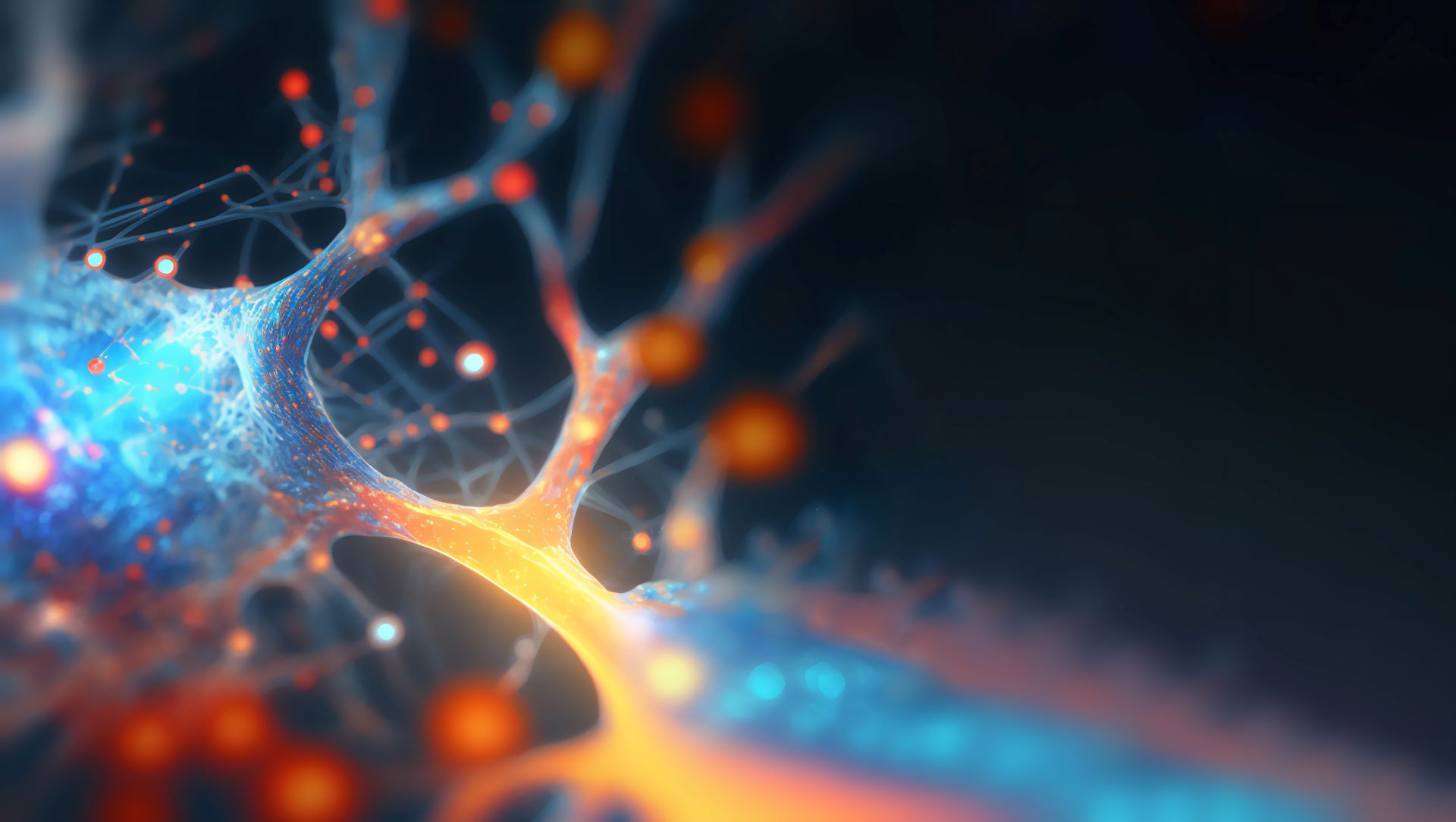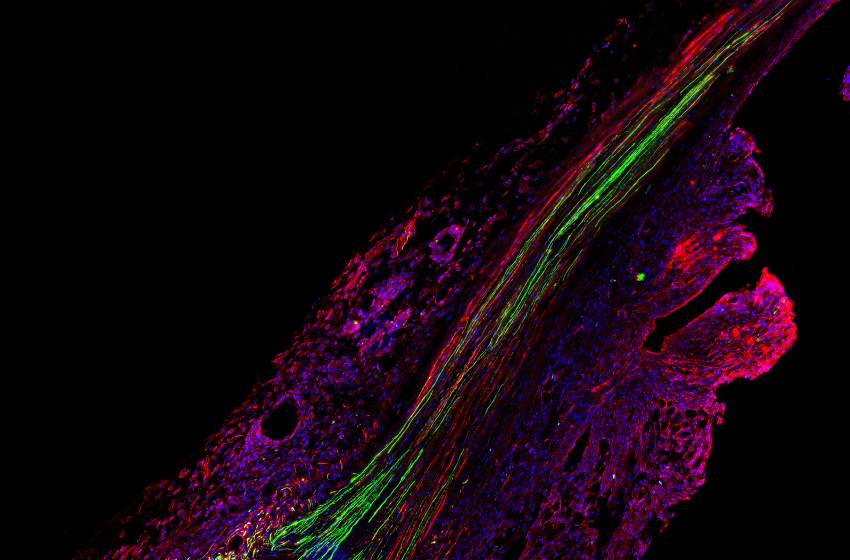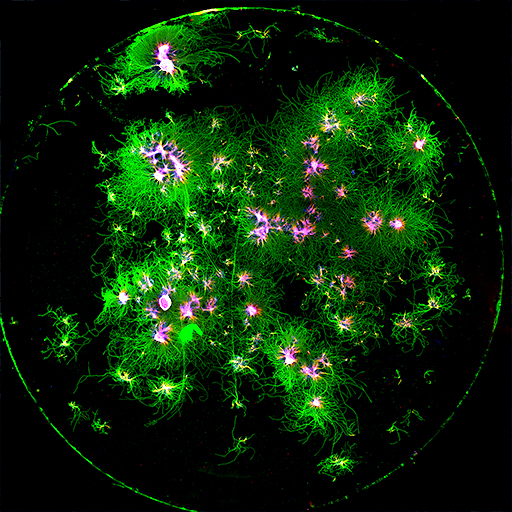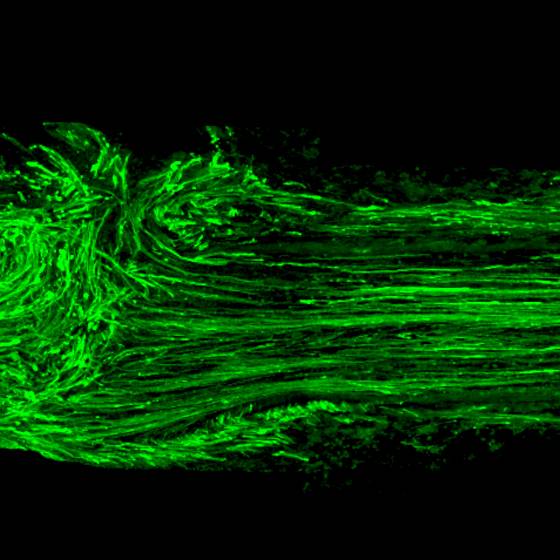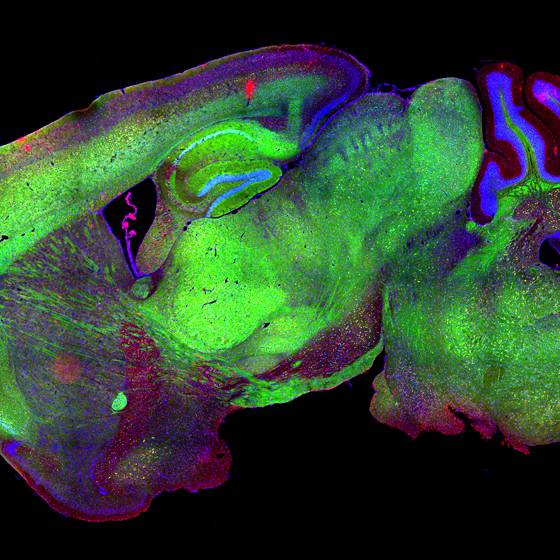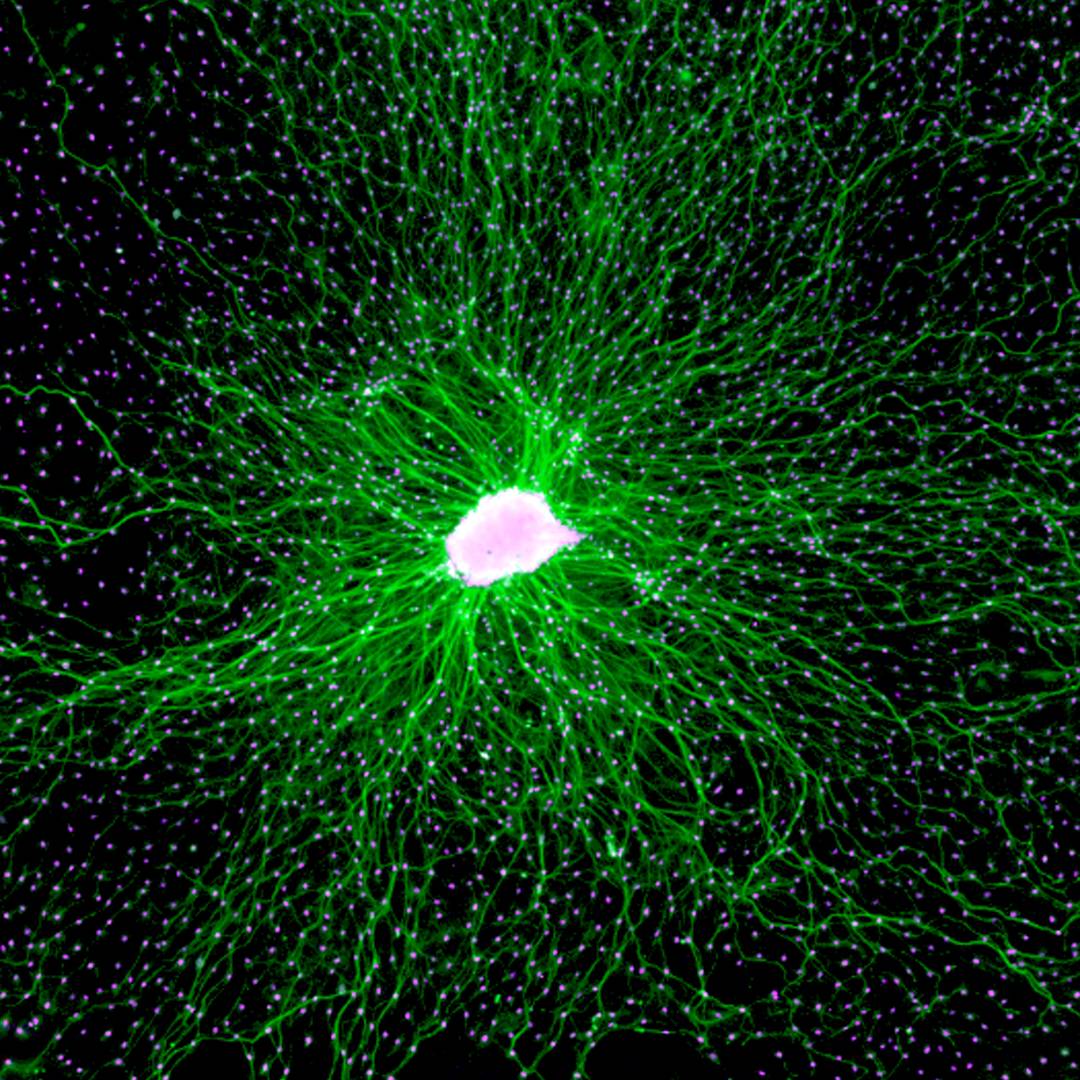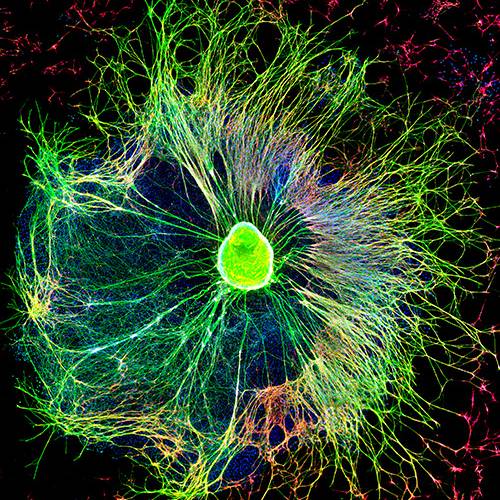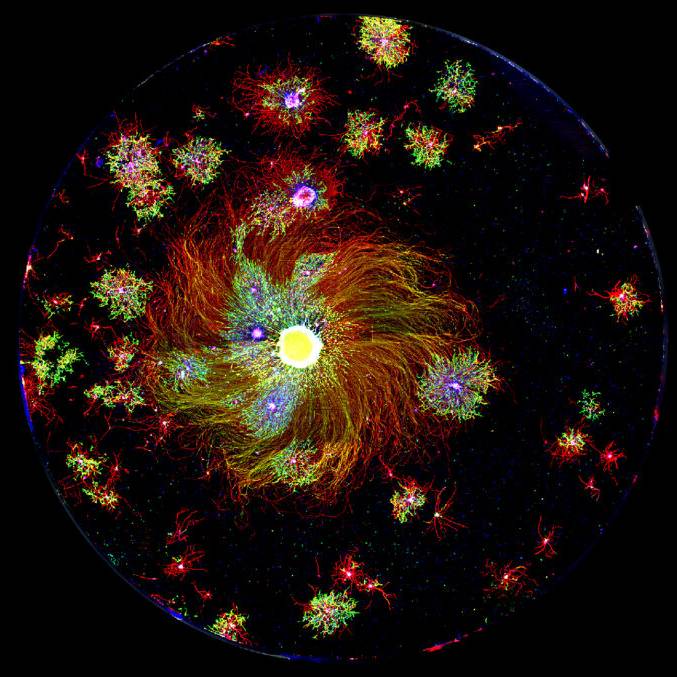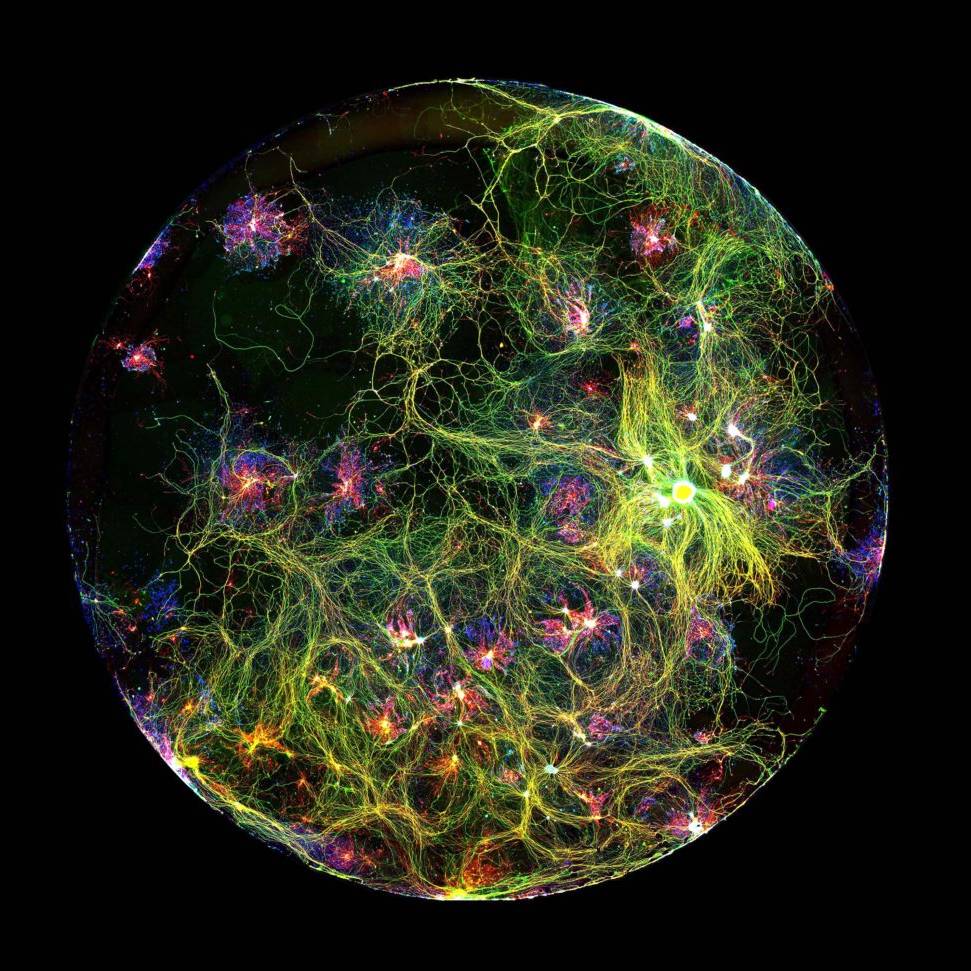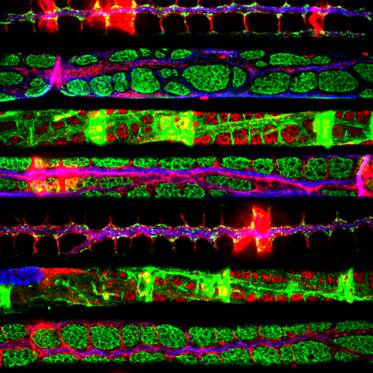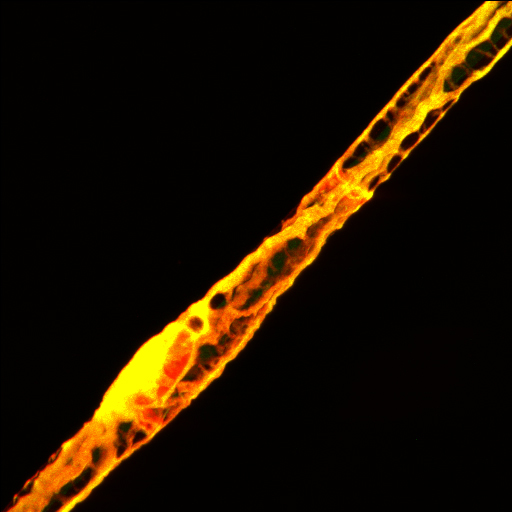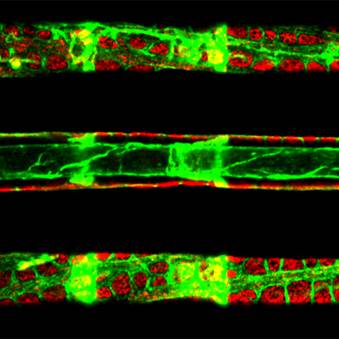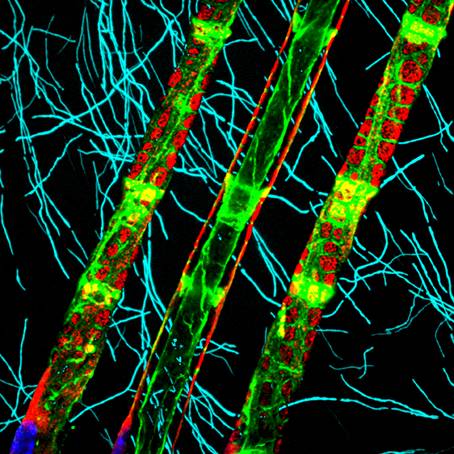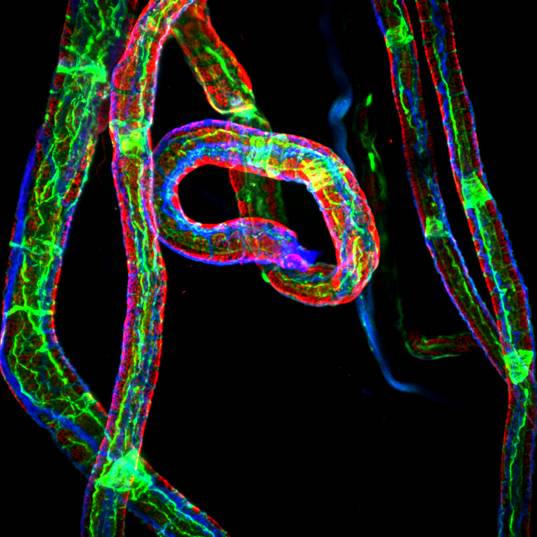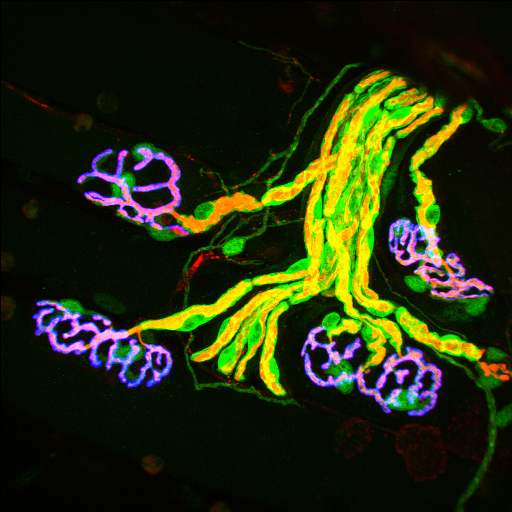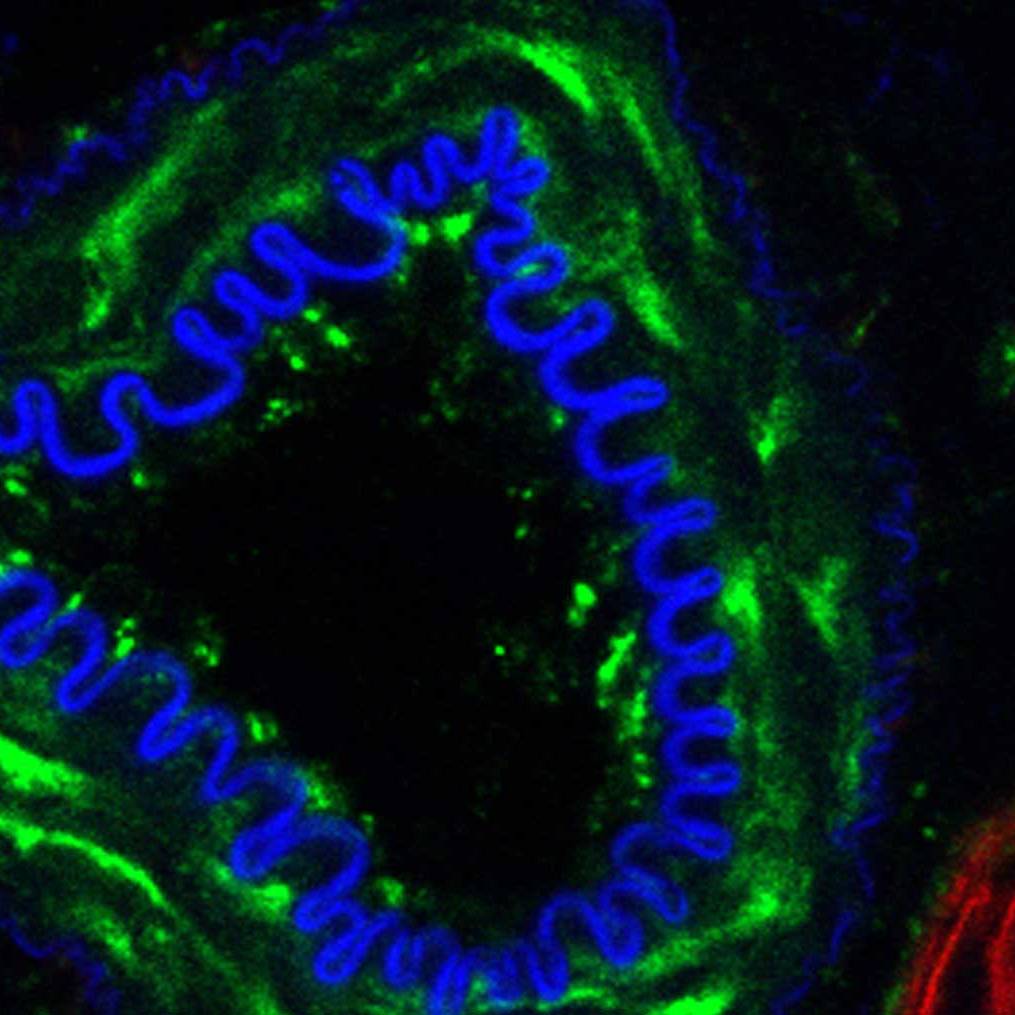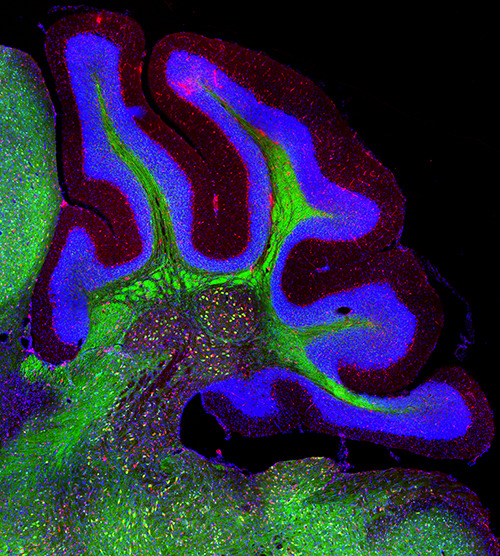Understanding brain aging for neuroprotective strategies
Aging represents the most important risk factor for the development of neurodegenerative diseases. As life expectancy is increasing and birth rate decreasing, the world’s population is getting older at an unprecedented rate. It is estimated that by 2050, approximately 17% of the global population (1.6 billion) will be aged 65 and over. Unfortunately, the fact that people are living longer has translated into an increase in chronic diseases, including neurodegenerative diseases in the population, with enormous social and economic consequences. Most neurodegenerative conditions for which age constitutes the most important risk factor, including Alzheimer’s disease and Parkinson’s disease, have no cure yet and treatments only modestly decrease symptoms, without a significant delay in the progression of neurodegeneration and the associated functional impairment.
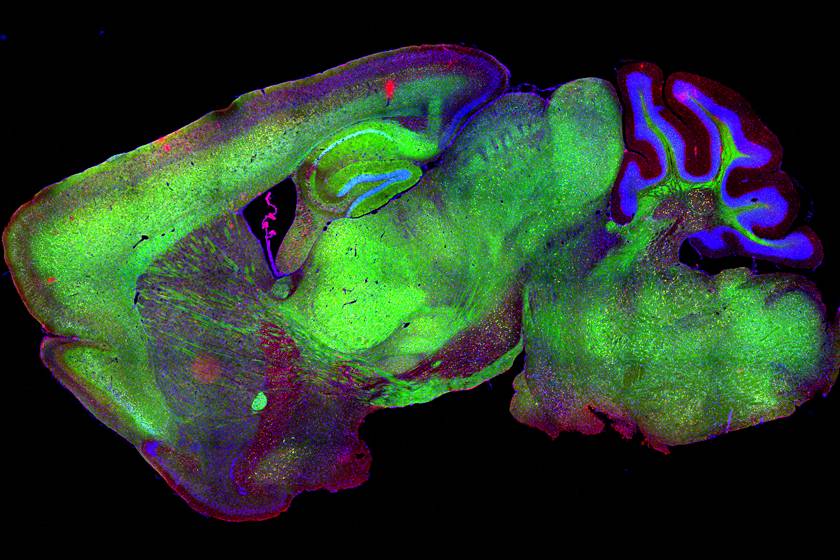
Sagittal section of mouse brain expressing YFP in neurons (green) and stained for a microglial marker in red and cell nuclei in blue.
Searching for novel Geroprotectors
Using in vitro and in vivo models, we study changes in neurons and glial cells along aging. By combining several techniques, including deep proteomic analysis, biomarker detection, microscopy and behavioral analysis, we have discovered the activation of neurodegenerative pathways which can be targeted by genetic and pharmacological approaches. Using biomedical models of brain aging, we have shown that systemic interventions in already aged mice are capable to revert age-associated hippocampal changes, restoring synaptic function, and leading to reversal of learning and memory capacity to youthful levels. In addition to systemic pharmacological interventions, we are also studying the impact of physical activity in brain function, to identify molecular mediators in the muscle-brain axis with neuroprotective effects.
People involved

Macarena Arrazola
PI collaborator

PhD in Biological Sciences from the Catholic University of Chile. Studying the contribution of necroptosis in the age-associated axonal degeneration of the hippocampus, and the impact of using pharmacological approaches to revert neuronal dysfunction and cognitive impairment during aging, proposing necroptosis as an attractive target for the future development of geroprotective tools to treat age-related disabilities.

Daniela Rebolledo
Senior Research Assitant

I am a Biochemist from Pontificia Universidad Católica de Chile (PUC) and PhD in Cell and Molecular Biology from the same university. My PhD thesis research was performed at the Physiology and Biophysics department, University of Washington. My research has focused on the physiology of the neuromuscular system and the pathological mechanisms behind neuromuscular disorders of diverse etiology.

Karina Girardi do Carmo
Postdoctoral fellow

Biologist, Ph.D., and MSc in Cell and Molecular Biology from Oswaldo Cruz Foundation (Fiocruz/RJ). Studying age-dependent decline of regenerative capacity in the peripheral nervous system. Mainly focusing on the contribution of metabolic profile of aging Schwann cells in senescence and particularly exploring the epithelial-mesenchymal transition (EMT) like process.
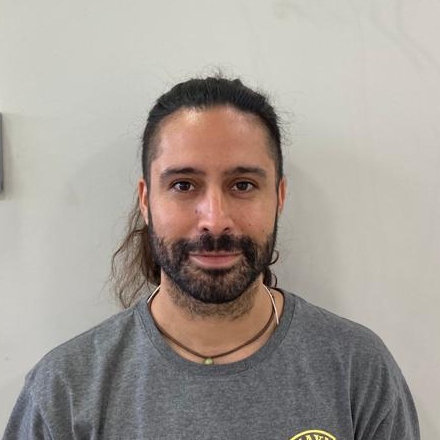
Felipe Véliz Valverde
PhD Student

Msc Neuroscience. Neurobiology PhD student at Universidad Mayor. I´m interested in understand the beneficial effects of exercise on brain function and behavior in aging. Skeletal muscle can crosstalk with other organs by myokines or exerquines. Some of them can cross the blood brain barrier and reach the brain, triggering neuroprotective effects. The aim question of my work is wheater some exerquines have an effect on axonal degeneration.
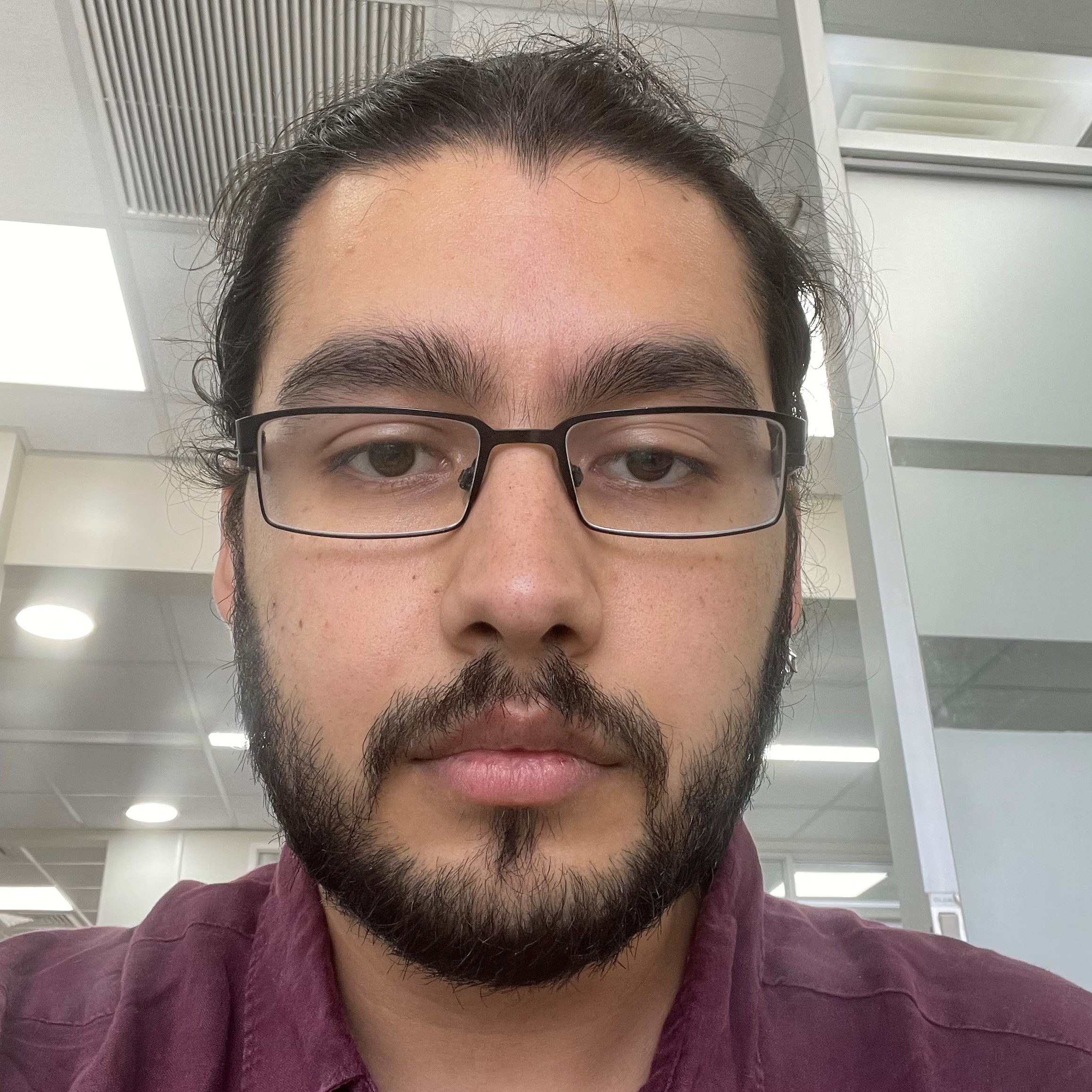
Rodrigo Leiva
Research Assitant

B.Sc(hons) degree in Neuroscience from the University of Glasgow and M.Sc in Integrative Neuroscience from the University of Edinburgh. I’m currently working on the role of axonal necroptosis and inflammation in the dopaminergic neurons of the nigrostriatal pathway in Parkinson’s Disease to assess it as a potential therapeutic target through the inhibition of RIPK3.
Related Publications
octubre 7, 2021
Dementia in Latin America: Paving the way toward a regional action plan.
Parra MA, Baez S, Sedeño L, Gonzalez Campo C, Santamaría-García H, Aprahamian I, Bertolucci PH, Bustin J, Camargos Bicalho MA, Cano-Gutierrez C, Caramelli P, Chaves MLF, Cogram P, Beber BC, Court FA, de Souza LC, Custodio N, Damian A, de la Cruz M, Diehl Rodriguez R, Brucki SMD, Fajersztajn L, Farías GA, De Felice FG, Ferrari R, de Oliveira FF, Ferreira ST, Ferretti C, Figueredo Balthazar ML, Ferreira Frota NA, Fuentes P, García AM, Garcia PJ, de Gobbi Porto FH, Duque Peñailillo L, Engler HW, Maier I, Mata IF, Gonzalez-Billault C, Lopez OL, Morelli L, Nitrini R, Quiroz YT, Guerrero Barragan A, Huepe D, Pio FJ, Suemoto CK, Kochhann R, Kochen S, Kumfor F, Lanata S, Miller B, Mansur LL, Hosogi ML, Lillo P, Llibre Guerra J, Lira D, Lopera F, Comas A, Avila-Funes JA, Sosa AL, Ramos C, Resende EPF, Snyder HM, Tarnanas I, Yokoyama J, Llibre J, Cardona JF, Possin K, Kosik KS, Montesinos R, Moguilner S, Solis PCL, Ferretti-Rebustini REL, Ramirez JM, Matallana D, Mbakile-Mahlanza L, Marques Ton AM, Tavares RM, Miotto EC, Muniz-Terrera G, Muñoz-Nevárez LA, Orozco D, Okada de Oliveira M, Piguet O, Pintado Caipa M, Piña Escudero SD, Schilling LP, Rodrigues Palmeira AL, Yassuda MS, Santacruz-Escudero JM, Serafim RB, Smid J, Slachevsky A, Serrano C, Soto-Añari M, Takada LT, Grinberg LT, Teixeira AL, Barbosa MT, Trépel D, Ibanez A.
Alzheimers Dement. 2021 Feb;17(2):295-313. doi: 10.1002/alz.12202. Epub 2020 Nov 20.
PMID: 33634602
octubre 7, 2021
GERO Cohort Protocol, Chile, 2017-2022: Community-based Cohort of Functional Decline in Subjective Cognitive Complaint elderly.
Slachevsky A, Zitko P, Martínez-Pernía D, Forno G, Court FA, Lillo P, Villagra R, Duran-Aniotz C, Parrao T, Assar R, Orellana P, Toledo C, Rivera R, Ibañez A, Parra MA, González-Billault C, Amieva H, Thumala D.
BMC Geriatr. 2020 Nov 25;20(1):505. doi: 10.1186/s12877-020-01866-4.
PMID: 33238908
octubre 7, 2021
Axonal Degeneration in AD: The Contribution of Aβ and Tau.
Salvadores N, Gerónimo-Olvera C, Court FA.
Front Aging Neurosci. 2020 Oct 15;12:581767. doi: 10.3389/fnagi.2020.581767. eCollection 2020.
PMID: 33192476
octubre 7, 2021
The Necroptosis Pathway and Its Role in Age-Related Neurodegenerative Diseases: Will It Open Up New Therapeutic Avenues in the Next Decade?
Salvadores N, Court FA.
Expert Opin Ther Targets. 2020 Jul;24(7):679-693. doi: 10.1080/14728222.2020.1758668. Epub 2020 May 4
PMID: 32310729
Related News
Las células de Schwann dificultarían la regeneración neuronal
noviembre 15, 2023
Javiera Mateluna Cuadra, 10 noviembre 2023, 17:00 hs Tiempo de lectura: 2 minutosEl trabajo, liderado por el laboratorio del Dr. Felipe Court, académico de la Universidad Mayor y que fue…
Descubren rol clave de células que impiden reparar daños al sistema nervioso periférico
octubre 30, 2023
El trabajo, liderado por el laboratorio del Dr. Felipe Court, académico de la Universidad Mayor y que fue publicado en la destacada revista EMBO Molecular Medicine, caracteriza por primera vez las…
